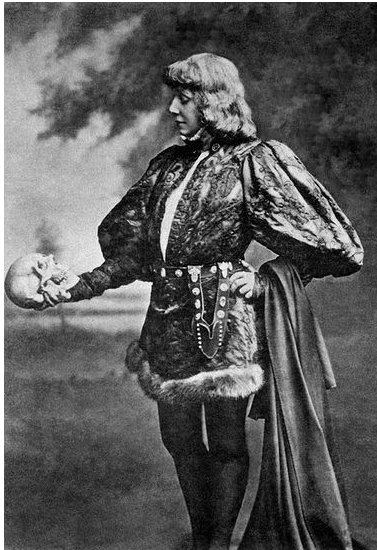3. The year consists of a 'year in leaf' (summer) and a 'year in straw' (winter). Life restarts with the return of Sun in spring and life stops when Sun departs in autumn. This basic pattern can explain why winter is associated with stones. The signature of life is movement and a stone does not move of its own accord, it is inert. So instead of talking about leaf and straw we could say life and death. ... He went away and stopped to rest by a lake, and meditated on death: should death be final or not? On seeing that a stick, then a buffalo turd, and lastly a piece of pith remained afloat after he had thrown them into the lake, he opted for resurrection. However, when a pebble sank, he reversed his decision. It was better that people should die, he concluded, otherwise the earth would quickly become overpopulated. Since that time, people only live for a certain period and die for ever ... It is easy to understand the most famous scene in Hamlet, when he regards the cranium ('stone') of his father - should he die or not:
In the G text the 'dry old bone' probably is depicted in my glyph type gagana:
According to my method for locating stars gagana in Gb7-18 could be associated with Ksora (δ Cassiopeia):
The message in the 2nd right ascension hour perhaps is to show how the 'old bone' is involved in recreating life. Only when the 'stone' (old bone) appears will there be room for a new person (otherwise earth would soon become overcrowded). At Gb8-7 (Kaffaljidhma, γ Ceti) the final phase of the process could be illustrated:
But a definite end to the 'old bone' season maybe is documented in the first glyph line on side a, where the figure in Ga1-26 seems to illustrate an opposite character:
There is only one eye hole in Ga1-18 and the other could have been filled by mud deposited from the deluge. Or there is only one eye in Ga1-18 and the other could have been swallowed: ... The clouds broke. He flew upward, drove his beak into the sky and scrambled over the rim to the upper world. There he discovered a town, and in one of the houses a woman had just given birth. The Raven stole the skin and form of the newborn child. Then he began to cry for solid food, but he was offered only mother's milk. That night, he passed through the town stealing an eye from each inhabitant. Back in his foster parents' house, he roasted the eyes in the coals and ate them, laughing. Then he returned to his cradle, full and warm. He had not seen the old woman watching him from the corner - the one who never slept and who never moved because she was stone from the waist down ... ... in the ceremonial course of the coming year, the king is symbolically transposed toward the Lono pole of Hawaiian divinity ... It need only be noticed that the renewal of kingship at the climax of the Makahiki coincides with the rebirth of nature. For in the ideal ritual calendar, the kali'i battle follows the autumnal appearance of the Pleiades, by thirty-three days - thus precisely, in the late eighteenth century, 21 December, the winter solstice. The king returns to power with the sun. Whereas, over the next two days, Lono plays the part of the sacrifice. The Makahiki effigy is dismantled and hidden away in a rite watched over by the king's 'living god', Kahoali'i or 'The-Companion-of-the-King', the one who is also known as 'Death-is-Near' (Koke-na-make). Close kinsman of the king as his ceremonial double, Kahoali'i swallows the eye of the victim in ceremonies of human sacrifice ... |
||||||||||||||||||||||||||||||||||||||||||||||||||||||||||||||||||||||||||||||||||||||||||||||||||||||||||||














